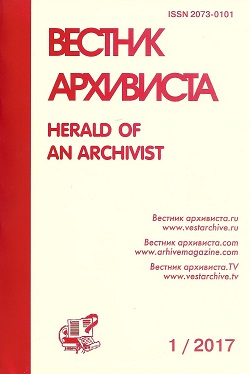| 10 March 2022
Posted in
Publishing soon
Scientific article
УДК 94 (510)+24+31
DOI 10.28995/2073-0101-2022-1-11-23
Yangutov, Leonid E., Orbodoeva, Marina V.
Institute for Mongolian, Buddhist, and Tibetan Studies, Siberian Branch of the Russian Academy of Sciences, Ulan-Ude, Russian Federation.
On Translations of Buddhist Sutras in the Nanbeichao Period Southern and Northern Kingdoms, 420–589
Abstract
Translation of Buddhist texts from Sanskrit into Chinese was of great importance for spreading and emergence of Buddhism in China. And yet the history of these texts translation has not yet received a sufficiently complete and comprehensive coverage in the Russian literature. The relevance of studying this topic is determined by importance of studying the centuries-long process of translating Buddhist literature into Chinese for understanding the history of Buddhism in China. It was one of the most important factors in transformation and Sinification of Buddhism in the country. This article is devoted to the least known period in the history of Buddhist texts translation, i.e. the period of Nanbeichao (Southern and Northern Kingdoms, 420–589). This period is of particular importance for the history of Buddhism in China, since it was then that social, cultural, and religious fodder had developed for emergence of schools of Chinese Buddhism, which marked the definitive formation of Buddhism in China. The article is to study the translation activities of Buddhist missionaries in the Southern and Northern Kingdoms. Therefore, it sets several tasks: to analyze the process of translating Buddhist literature in both kingdoms; to determine the continuity and differences between translations of the specified period and those of the previous eras; and to assess their historical significance. The solution to these problems rests on the method of systematic and comparative analysis. The article shows that, despite the difference in political, economic, and social situations in both kingdoms, translation activities did not differ much. They followed translation traditions of the Eastern Jin period (316–420). Much attention was paid to translation of the Yogachara school literature, reflecting the development of Buddhism in India. Attention was also paid to translation of the Mahayana texts, which played a huge role in the formation of philosophical and soteriological principles of Chinese Buddhism. The research has introduced into scientific use some little-known translations of Buddhist sources and named their translators. It has been revealed that, in the period under review, the greatest importance was attached to repeated translations, which indicated the further improvement of translation technique. It has been determined that re-translations played an important role in the shaping of doctrines of the schools of Chinese Buddhism. The study concludes that the history of translation of Buddhist texts in the Nanbeichao period is a valuable source for studying not only history of Buddhism of the period, but also social and political history of medieval China. It can clarify many issues related to adaptation of the Indian Buddhism values to the Chinese cultural environment.

Keywords
Historical sources, Buddhism, Chinese language, Sanskrit, translation, Buddhist texts, Mahayana, Chinese Buddhism.
References
Istoriya Kitaya s drevneyshikh vremen do nachala XXI veka [TIKHVINSKY, S.L. (ed.). History of China from the ancient times to the early 21st century. In Russ.]. In 10 vols. Vol. 3: Troyetsarstviye, TSzin', Yuzhnyye i Severnyye dinastii, Suy, Tan [POPOVA, I.F., KRAVTSOVA, M.E. (eds.). Three Kingdoms, Jin, Southern and Northern Dynasties, Sui, Tang (220 - 907). In Russ.]. Moscow, Nauka, Vostochnaya literature publ., 2014, 991 p.
HUI-JIAO. Gao seng zhuan (Zhizneopisaniya dostoinykh monakhov) [MEN’SHIKOV, L. N. (ed.), ERMAKOV, M. E. (transl.). Biographies of Eminent Monks. In Russ.]. Vol. 1. Moscow, Nauka; GRVL, publ., 1991, 251 p.
Zhongguo fojiao (Kitaiskii buddizm) [Buddhism of China. In Chinese]. Vol.1, Shanghai, Dongfang chuban she, 1996, 489 p.
YANG, WEIZHONG. Zhongguo weishi zong tongshi (Vseobshchaya istoriya kitayskoy shkoly tol'ko soznaniya [The General History of the Chinese Consciousness-Only School. In Chinese]. Vol.1, Nanjing, Fenghuang chuban she, 2008, 447 p.
About the authors
Yangutov Leonid Evgraphovich, PhD in Philosophy, professor, Institute for Mongolian, Buddhist, and Tibetan Studies, Siberian Branch of the Russian Academy of Sciences, department of philosophy, culturology, and religious studies, chief researcher, +7-914-984-98-83, This e-mail address is being protected from spambots. You need JavaScript enabled to view it
Orbodoeva Marina Valerievna, PhD in History, Institute for Mongolian, Buddhist, and Tibetan Studies, Siberian Branch of the Russian Academy of Sciences, department of philosophy, culturology, and religious studies, junior researcher, +7-964-403-85-86, This e-mail address is being protected from spambots. You need JavaScript enabled to view it
Grant information
The article has been prepared with financial support of the Russian Science Foundation no. 21-18-00074, https://rscf.ru/project/21-18-00074/. "Worlds of Mahayana Buddhism in the context of world civilizational processes"














